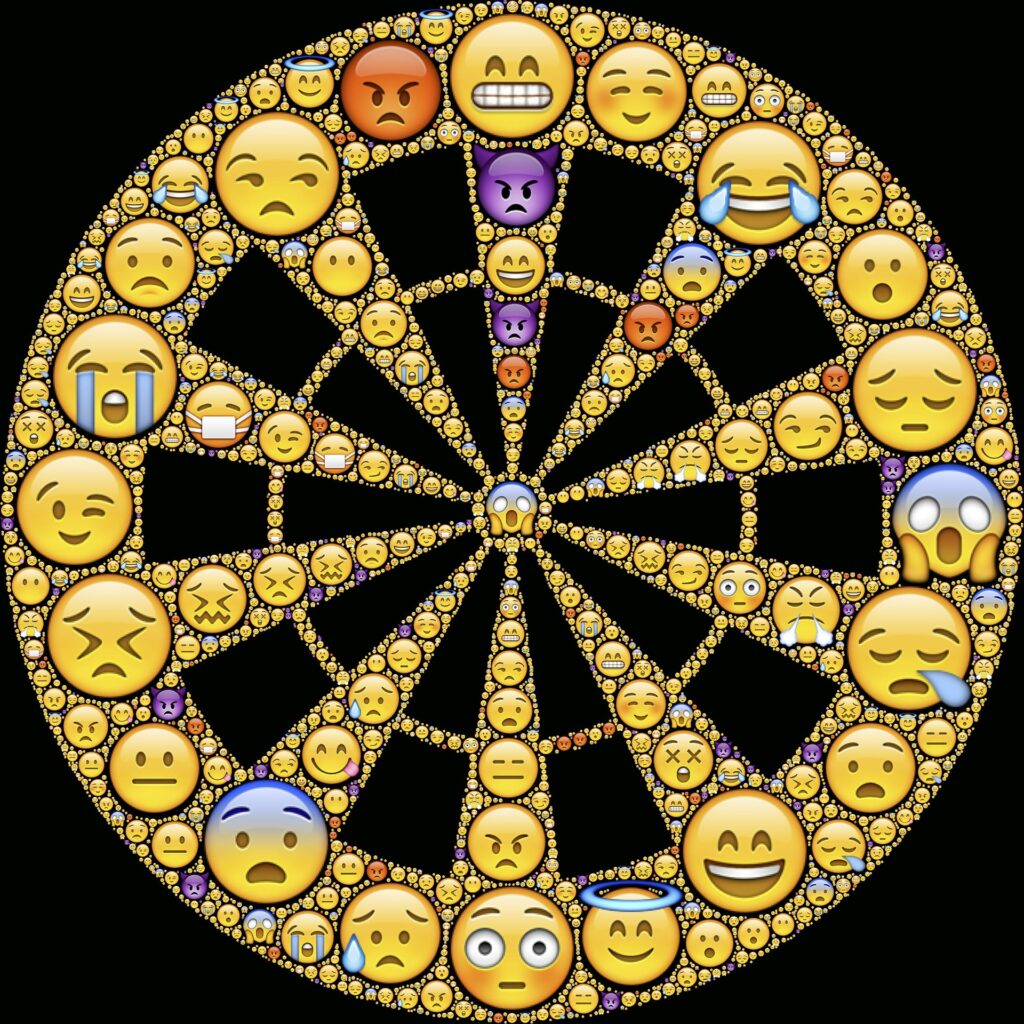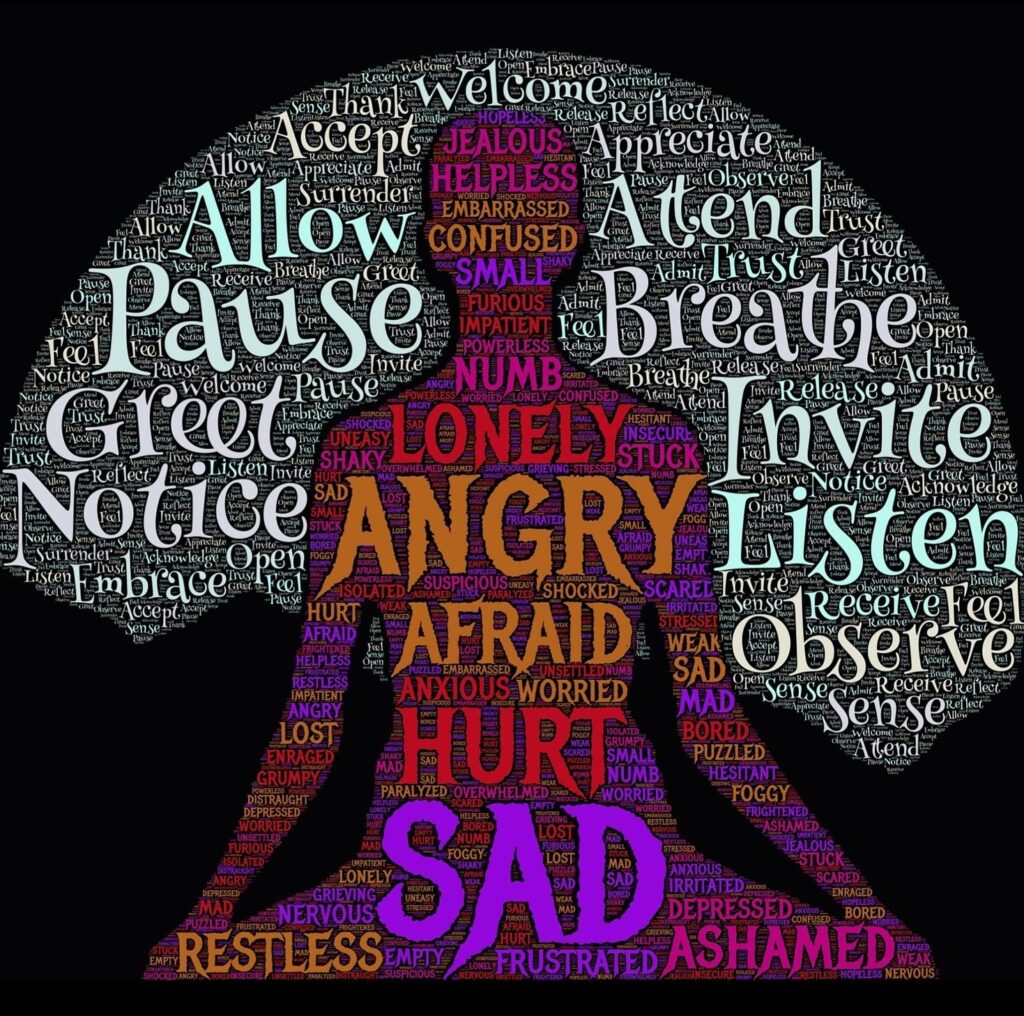The anxiety experience is very much like going through repeated grieving cycles. I remember noticing the familiar patterns with my anxiety. I would experience a significant “episode” and over the next few days go through a very predictable sequence of emotions – an anxiety grief cycle. Naturally I hated each of these emotions, and just wanted to get back to “normal”.
The first of these emotions was intense anxiety and fear which quickly morphed into embarrassment and shame for reacting to the situation the way I did. It was usually a social situation that triggered my feelings of embarrassment, but the basic reaction is very similar for sufferers across the spectrum of anxiety types.
I would blush furiously and sweat profusely, and just want to run away and hide my face. This might be in business meetings, family functions, or just on a bus or train or in a supermarket when I caught someone’s eye unexpectedly. I was thoroughly ashamed of who I was and how I was in social situations.
It was like something inside me had died
As the embarrassment turned to shame, I would withdraw mentally inside my head and beat myself up. I would feel hurt, lost and pathetic. After the trauma of this anxiety episode, I would begin to feel a deep, deep loss of self; it was like something inside me had died. And this is where the cycle of emotions kicked in that I later realized were typical of any grieving situation.

The Anxiety Grief Cycle
Firstly I would experience anger that this had happened and that I had failed to cope with the situation. I felt angry with myself for being so weak, angry at my parents for my upbringing that I felt must have led to this condition, angry with having found myself in this situation, and angry at the world for the injustice of it all. “What had I ever done to deserve this?!”
The anger then turned to extreme sadness at my situation and the fact it had been this way for so long. I just wished I could be “like everyone else”, and wondered why I suffered this way, and whether it would ever change. I had powerful thoughts along the lines of “Why did this happen?” “Why me?”, and a desire to deny the reality of the situation. I just wished I could wake up and find that my anxiety had just been a dream. The pain of admitting it was really happening was awful.
I would then go into the mode of figuring out how to stop it happening in future. I would analyze what just happened and how I reacted. I would try to come up with a way I could avoid reacting that way, maybe by telling myself something, or changing my thoughts. Of course I had gone down this road hundreds of times before, and nothing I had ever come up with had made any difference.
I thought I was the only person in the world going through this
As I vaguely considered trying some new medication or treatment, my realization that nothing had changed in years (and seemingly was never going to change) caused the anger and sadness to turn to despair. This was such a hollow, empty, lonely feeling – I thought I was the only person in the world going through this. I also felt that I was powerless to change my situation, and that no one else could help me either. The despair and hopelessness became a form of depression and ongoing shame.
While each of these emotions tends to dominate for a while in this sequence, all of them – anger, sadness, shame, despair depression actually occur together. In fact the depression is really the result of suppressing the worst of the other emotions. It is the brain shutting off emotions. The unwanted side effect of this is that we tend to no longer experience emotions we do want to feel, such as happiness, joy and love.
Eventually, in my experience, the anger, sadness and shame mostly faded into the background. The cycle from start to finish might have lasted a few hours, days or even a few weeks depending on the severity of the trauma caused by the anxiety episode, but left me with an uneasy “peace”. It would be replaced by a feeling of depression, and general anxiety about when the next “episode” might happen.
Between the Cycles
This period of lower level anxiety (relative peace) could itself last hours, days or even weeks (and in rare cases months). I would try to maintain a level of vigilance for the next episode, in the hopes that I could keep it at bay, or intercept it before it took hold. This effort was exhausting and contributed to the deep fatigue and depression that was a constant companion.
It was also fruitless. Sooner or later, usually when I was least expecting it, something would happen and I would react instantly to it, causing the adrenaline surge, the fear, the intense thoughts and emotions. It would happen so suddenly that, no matter what I had planned, I was powerless to even do anything that might prevent or alleviate it. And so the anxiety grief cycle would begin again.
These cycles are highly intense and unpleasant, and make life quite miserable. And clearly, if we are not suffering in the midst of anxiety or panic, we are anticipating and vigilant for situations that might trigger the next episode. Or we are fearing / avoiding / planning for the next “attack”, and making desperate attempts to find an answer to it all.
Breaking the Cycle
There is no magic bullet of course; no tactic or method that will prevent or neutralize the anxiety/panic. But we can initiate our recovery by addressing the anxiety/panic attack, and the subsequent grief cycle.

The only way to process grief of any kind or origin is to go through it with as much presence as possible, experiencing the feelings as deeply and fully as we can. The same applies to the anxiety grieving cycle. Once we begin to allow it to happen and feel it all, we start to lose our fear of it. And the earlier in the attack that we can face and allow these emotions, the better it is.
This is the path to healing our anxiety condition. And since we are virtually guaranteed to get frequent and repeated opportunities to practice this, we have everything we need to recover.







